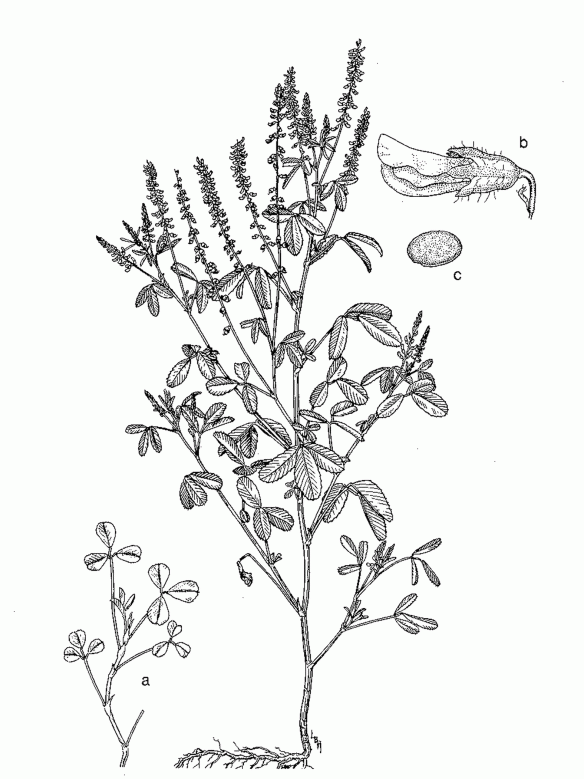Weed No. 3. Annual Yellow Sweetclover (Melilotus indicus)
This Mediterranean and Middle Eastern clover is probably present in Dewey-Humboldt, but I haven’t yet spotted it. Annual and sometimes biennial, the plant flowers from fall to spring in moist sites including lawns, gardens, streamsides, and farms.
Sweetclover feeds bees and other pollinators, but is poisonous to some mammals. According to the Encyclopedia of Life, it can repel bed bugs and clear constipation. I haven’t read the source for these uses, but as the climate warms and humidity increases, repelling bedbugs might become an essential benefit. Worth a try.

Annual Yellow Sweetclover. The tiny yellow flowers droop as they age. By Eigene Arbeit, Selbst Fotografiert. Reproduced with permission (CC BY-SA 3.0).

Annual Yellow (Indian) Sweetclover (Melilotus indicus). This erect annual has spikelike inflorescences and small drooping flowers. The round seedpod is about 1/12 inch long and holds 1 or 2 seeds. Seeds are eggshaped, 1/16 inch long, dark greenish brown, and have a rough surface. The compound leaves are ½ to 1¼ inches long and have three leaflets. They have small teeth above the middle and a dull red bar beside the midrib. Their tips are indented or blunt. A. Seedling. B. Pealike flower. C. Seed. (Parker 1972. Used with permission of the University of Arizona Press.)

